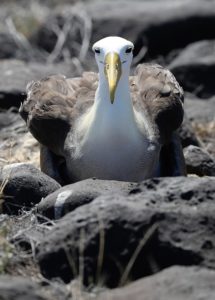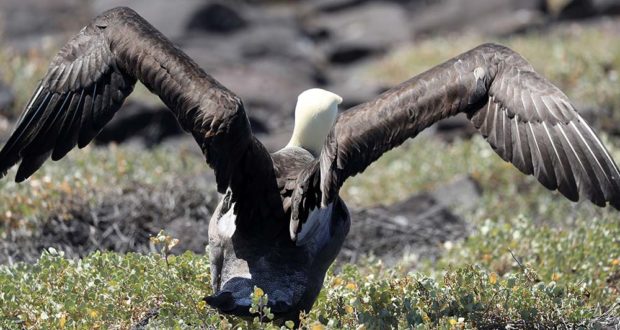As I climbed the trail on Espanola, it flattened out into a stony plateau of sand and low shrubs.
Sitting calmly among the stones were enormous, plump white birds, widely but evenly spaced like suburban cottages, each perched gently on
one white egg.

Waved Albatross incubating its solitary egg on Espanola
Espanola is the only place to see these breeding Waved Albatrosses (
Phoebastria irrorata), though they are a common sight along the coasts of Ecuador and Peru when they leave the Galapagos from December through March. The Waved Albatross is the largest bird endemic to the Galapagos, with a wingspan of more than eight feet and a long, thick yellow bill that hooks at the end. The Waved Albatross gets its “wave” from the characteristic barring on its chest.
All but two of the albatrosses I saw were resting on their nests on the bare ground. One was walking in the gangling fashion that has made albatrosses synonymous with awkward. Another was soaring gracefully along the cliffs opposite the breeding grounds. Albatrosses are mostly monogamous, and a few pairs sat together in the brush, preening each other with their bills.
The birds were unperturbed by approaching visitors or others of their kind. They sat, staring straight ahead, every once in a while briefly standing only to ruffle their feathers and adjust their posture.

